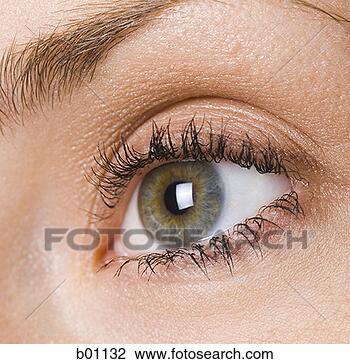On our first lesson using the cameras we learned about the camera itslef and what each button is used for and how it effects the final product.

TIMECODE: The timecode is seen at the top of the screen and is used to indicate how much time the person has filmed and left on the film. It looks something like this:

the 01 represents hours, the 34 represents the minutes and the 36 represents the seconds. However, the 14 in the time code represents the frames. The maximum frames allowed is 25 and once it reaches 25 it will then go back to 01, it is 25 per second as well so as soon as it changes the second will also have reached 60 and returned to 01, this is the shutter speed. A useful way to imagine how the shutters work is to imagine a little man inside the camera opening and shutting the frames so that if you turn the shutter speed up than the little man will be clapping a lot and this changes the speed of the vision on screen; for example if you increase the shutter speed than the image is quickened and so by changing it, it can change how you wish for the audience to interpret the scene.
WHITE-BALANCE: White balance is used to help the camera adjust to the light and the colours within the shot. There is a button on the side of the camera that says: wht balance and when you press it, it takes the colour of the viewing image and uses that as a basis; this is why it is best to start off with focusing on a white area so that the colour is clearer and there are no problems with it later on.
ZOOM: There is a zoom control on the camera that allows you to zoom in and out. In order to focus on a specific object, zoom in to an extreme close up of the object and then zoom out; this allows the focus to be better and the image to be a lot more centered on something rather than just a shot.
FOCUS: There is a focus control on the camera and this allows the image in your view finder to be sharp and clear. You can either focus automatically or manually. In doing auto-focus the camera will automatically focus on what is on the view-finder. However, because it is automatic, it means that the camera focuses on whatever is brightest first and so doing it manually allows you to adjust it according to how you would prefer your shot to be.
When using a camera, you also have to remember to set up the tripod! Using a tripod allows the video to be a lot more smooth and the continuity is usually much better. In setting up the tripod you must unhook the three legs so that they are at the right level of height, I found that working with it at its highest was easier. Then, you must place the camera on it firmly and in order to make sure that it is on securely use the adjusting nut underneath and the panning handle so that the bubble is directly in the middle of the circle; this is BUBBLING. This will make sure that the camera is secure and will not move when you are using it. The panning handle allows you to pan across the scene and to adjust the level of the viewing.
If you want to appear more involved with what is happening on screen than it is usually best to use the camera as a handheld; this gives it a more personal feel and also allows the cameraman/woman to experiment more with levels. During the filming of our scene, we varied it by using both the tripod and handheld depending on the shot we wished to make, this allowed it to flow more easily rather than from one shot to another.
CAMERA SHOT TYPES:
WIDESHOT:
EXTREME WIDE SHOT:


VERY WIDE SHOT


MID-SHOT
MEDIUM CLOSE-UP:

CLOSE UP
EXTREME CLOSE-UP

CUTAWAY SHOT:
CUT-IN
TWO-SHOT:


OVER-THE-SHOULDER SHOT:



NODDY-SHOT:

POINT OF VIEW SHOT:

 the first thing most people notice when looking at this poster is the loving embrace of Leornado DiCaprio and Kate Winslet, indicating to the audience that it is a love story and as the eyes move down the poster the boat makes it clear that without knowing anything about Titanic, it is going to be a love story involving the historic story of the sinking ship.
the first thing most people notice when looking at this poster is the loving embrace of Leornado DiCaprio and Kate Winslet, indicating to the audience that it is a love story and as the eyes move down the poster the boat makes it clear that without knowing anything about Titanic, it is going to be a love story involving the historic story of the sinking ship.

When filming a scene you must always keep in mind the rule of thirds and the 180 degree rule. Imagine the screen is crossed off into three sections so that it is clear about what the audience sees first. For most of the audience of a film or TV show, they would read from left to right and the screen is just the same, therefore the image that is going to be the initial thing they see will most likely be what is positioned on the top left hand corner. The rule of thirds is helpful when making film posters as it usually has the main character or hero positioned somewhere close to the first intersection of the screen, with the movie of the title further down so that the person viewing the poster has to scan the whole poster to read it, similarly to a book, e.g:
 the first thing most people notice when looking at this poster is the loving embrace of Leornado DiCaprio and Kate Winslet, indicating to the audience that it is a love story and as the eyes move down the poster the boat makes it clear that without knowing anything about Titanic, it is going to be a love story involving the historic story of the sinking ship.
the first thing most people notice when looking at this poster is the loving embrace of Leornado DiCaprio and Kate Winslet, indicating to the audience that it is a love story and as the eyes move down the poster the boat makes it clear that without knowing anything about Titanic, it is going to be a love story involving the historic story of the sinking ship.The 180 degree line is an invisible line that you need to constantly be aware of when filming anything and that was evident when we first practised with the cameras and I broke the rule and in doing this it confused the audience because person A started off on one side and because I began filming it from another side, it looked as though person A had moved place. By using the 180 degree line it allows the audience to understand perfectly what is going on and it won't seem as though someone has automatically jumped from one side to the other without moving.
Whilst filming, the actors need to know when they should start their scene and so in order to make this particularly clear and obvious the director should shout STANDBY, TURN OVER and ACTION. STANDBY readys everyone to take their position for the take. TURN OVER allows the camera person to know when to start rolling the film of the camera-a few seconds is then run as the camera gets up to speed- this is often referred to as LEAD IN, once this is done the cameraman will respond with STANDING BY and then the director can shout ACTION, cuing the actors to begin the take.






No comments:
Post a Comment